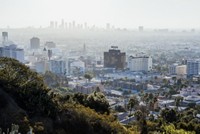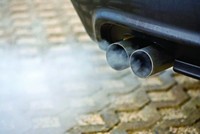Advertisement
Grab your lab coat. Let's get started
Welcome!
Welcome!
Create an account below to get 6 C&EN articles per month, receive newsletters and more - all free.
It seems this is your first time logging in online. Please enter the following information to continue.
As an ACS member you automatically get access to this site. All we need is few more details to create your reading experience.
Not you? Sign in with a different account.
Not you? Sign in with a different account.
ERROR 1
ERROR 1
ERROR 2
ERROR 2
ERROR 2
ERROR 2
ERROR 2
Password and Confirm password must match.
If you have an ACS member number, please enter it here so we can link this account to your membership. (optional)
ERROR 2
ACS values your privacy. By submitting your information, you are gaining access to C&EN and subscribing to our weekly newsletter. We use the information you provide to make your reading experience better, and we will never sell your data to third party members.
Environment
EPA Tightens Limits On SO2 Emissions
by Glenn Hess
June 14, 2010
| A version of this story appeared in
Volume 88, Issue 24
EPA has set a new health standard that further limits emissions of sulfur dioxide, a pollutant known to trigger asthma attacks and cause other respiratory problems. The new rule sets the amount at 75 ppb over a one-hour period, a level designed to protect people from short-term exposures while outdoors (see page 34). The previous standard, set in 1971, was based on a 24-hour measurement. “Moving to a one-hour standard and monitoring in the areas with the highest SO2 levels is the most efficient and effective way to protect against SO2 pollution in the air we breathe,” EPA Administrator Lisa P. Jackson says. EPA estimates that the rule will help prevent 2,300 to 5,900 premature deaths and 54,000 asthma attacks per year. The agency projects that the standard will be fully implemented in 2020, at a total cost of approximately $1.5 billion. About three-quarters of SO2 emissions come from coal-fired power plants and 20% from other industrial facilities. Public health advocates welcome the new hourly air quality standard. “This standard offers the promise of real protection to the people who have breathed these fumes for far too long,” says Charles D. Connor, president of the American Lung Association.




Join the conversation
Contact the reporter
Submit a Letter to the Editor for publication
Engage with us on Twitter